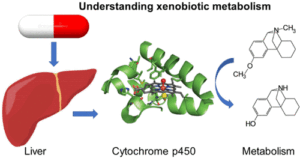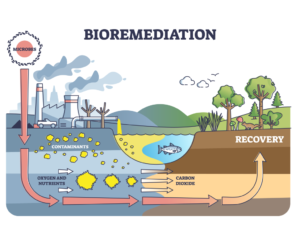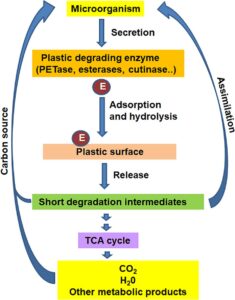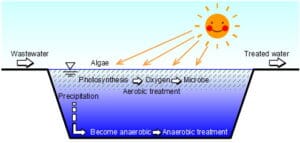Chemical Oxygen Demand (COD) is a critical parameter in wastewater analysis that measures the total amount of oxygen required to chemically oxidize organic and inorganic compounds in water. It serves as an indicator of water quality and is used to assess the pollution level in wastewater.

Definition:
COD is the amount of oxygen (in milligrams per liter, mg/L) required to oxidize both biodegradable and non-biodegradable organic matter and certain inorganic compounds in water using a strong chemical oxidizing agent.
Significance of COD:
- Water Quality Assessment:
- COD provides a comprehensive measure of organic pollution, including substances not degraded biologically.
- Pollution Monitoring:
- It is used to monitor and control wastewater treatment processes in industries and municipal plants.
- Effluent Discharge Regulations:
- COD levels in treated effluents must comply with environmental discharge standards to prevent water pollution.
- Indicator of Treatment Efficiency:
- Comparing influent and effluent COD values helps determine the efficiency of wastewater treatment.
Sources of COD in Wastewater:
- Industrial Waste:
- Chemicals, dyes, detergents, and hydrocarbons.
- Domestic Sewage:
- Organic matter from food waste, human excreta, and household products.
- Agricultural Runoff:
- Fertilizers, pesticides, and plant debris.
- Natural Sources:
- Decaying vegetation, algae, and other organic material.
Principle of COD Measurement:
COD is determined by chemically oxidizing organic and inorganic compounds in the water sample using a strong oxidizing agent, typically potassium dichromate (K₂Cr₂O₇), in the presence of sulfuric acid (H₂SO₄). The reaction is catalyzed by silver sulfate (Ag₂SO₄) and occurs at high temperatures.
Oxidation Reaction:
Organic Matter + Cr₂O₇²⁻ + H⁺ → CO₂ + H₂O + Cr³⁺
The amount of dichromate consumed during the reaction is proportional to the COD of the sample.
Procedure for COD Measurement:
- Sample Preparation:
- Collect and filter the water sample to remove suspended solids.
- Reagent Addition:
- Add a known amount of potassium dichromate (K₂Cr₂O₇), sulfuric acid (H₂SO₄), and silver sulfate catalyst to the sample.
- Heating:
- Heat the mixture in a reflux apparatus at 150°C for 2 hours to ensure complete oxidation.
- Titration:
- After cooling, the excess potassium dichromate is titrated with ferrous ammonium sulfate (FAS) using ferroin as an indicator.
- Calculation:
- The COD is calculated based on the amount of dichromate consumed during oxidation.
Applications of COD Analysis:
- Wastewater Treatment Plants:
- Monitor organic pollution levels in influent and effluent water.
- Industrial Effluents:
- Ensure compliance with discharge regulations.
- Environmental Monitoring:
- Assess the impact of pollutants on natural water bodies.
- Design of Treatment Systems:
- Provides data for sizing and optimization of treatment units.
Advantages of COD:
- Measures both biodegradable and non-biodegradable organic compounds.
- Faster analysis compared to biological oxygen demand (BOD), providing results within a few hours.
- Applicable to a wide range of industrial and domestic wastewater types.
Limitations of COD:
- Does not differentiate between biodegradable and non-biodegradable components.
- Inorganic reducing agents (e.g., sulfides, nitrites) can interfere, leading to overestimation.
- Requires hazardous chemicals like potassium dichromate and concentrated sulfuric acid.
COD vs. BOD:
| Parameter | COD | BOD |
|---|---|---|
| Definition | Oxygen is required for the biological degradation of organic matter. | Oxygen required for biological degradation of organic matter. |
| Time Required | 2-4 hours. | 5 days (standard). |
| Inorganic Matter | Includes inorganic oxidizable matter. | Excludes inorganic matter. |
| Interferences | Inorganic reducing agents may interfere. | Limited to biodegradable organics. |
| Usage | Rapid assessment of pollution. | Long-term water quality analysis. |
Typical COD Values:
- Drinking Water: < 5 mg/L.
- Treated Sewage: 20-60 mg/L (depends on standards).
- Industrial Effluents: 100-1,000 mg/L (varies widely based on industry).
- Raw Domestic Sewage: 200-800 mg/L.
COD is a vital tool for understanding water quality and assessing organic pollution in wastewater. It plays an essential role in environmental monitoring, industrial compliance, and optimizing wastewater treatment processes. Although it has limitations, its speed and comprehensiveness make it a cornerstone of water quality analysis.











